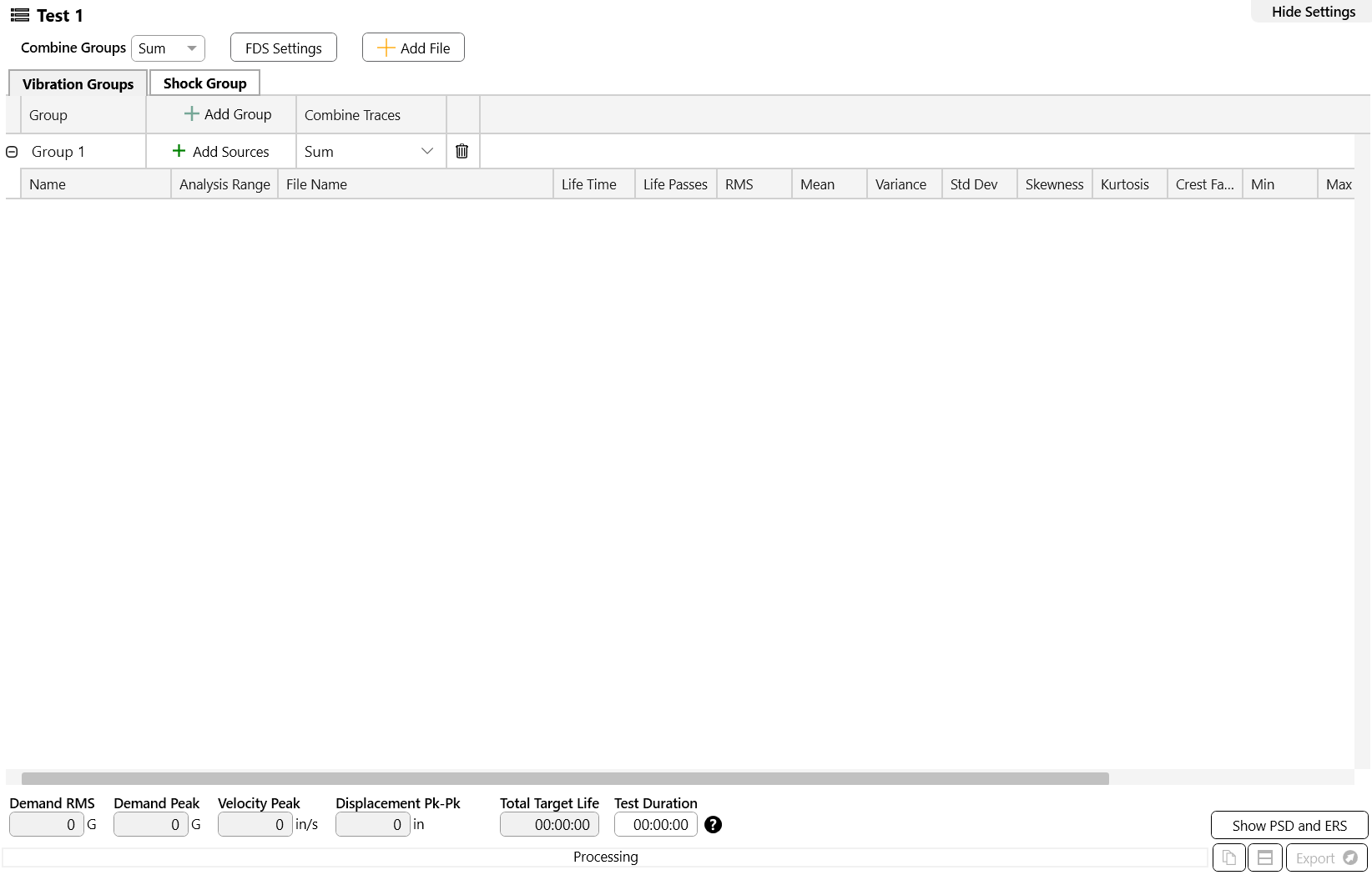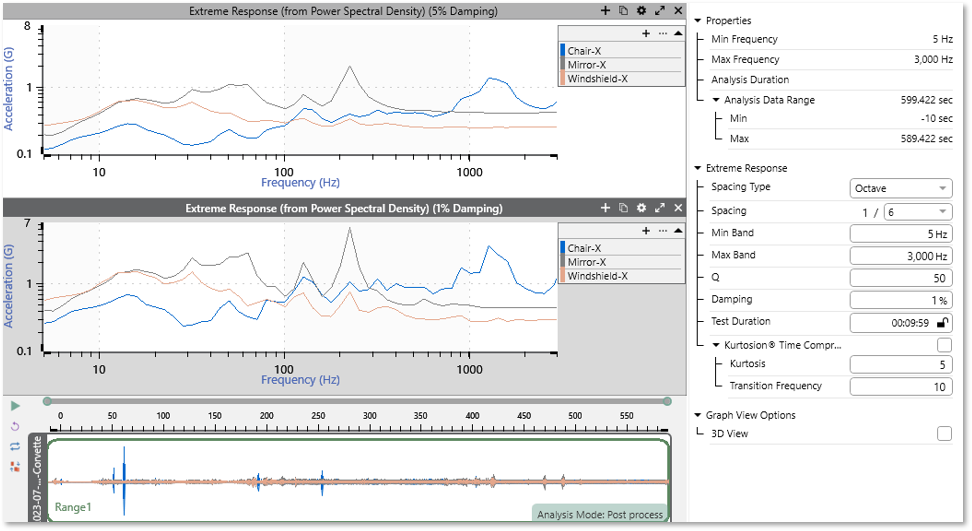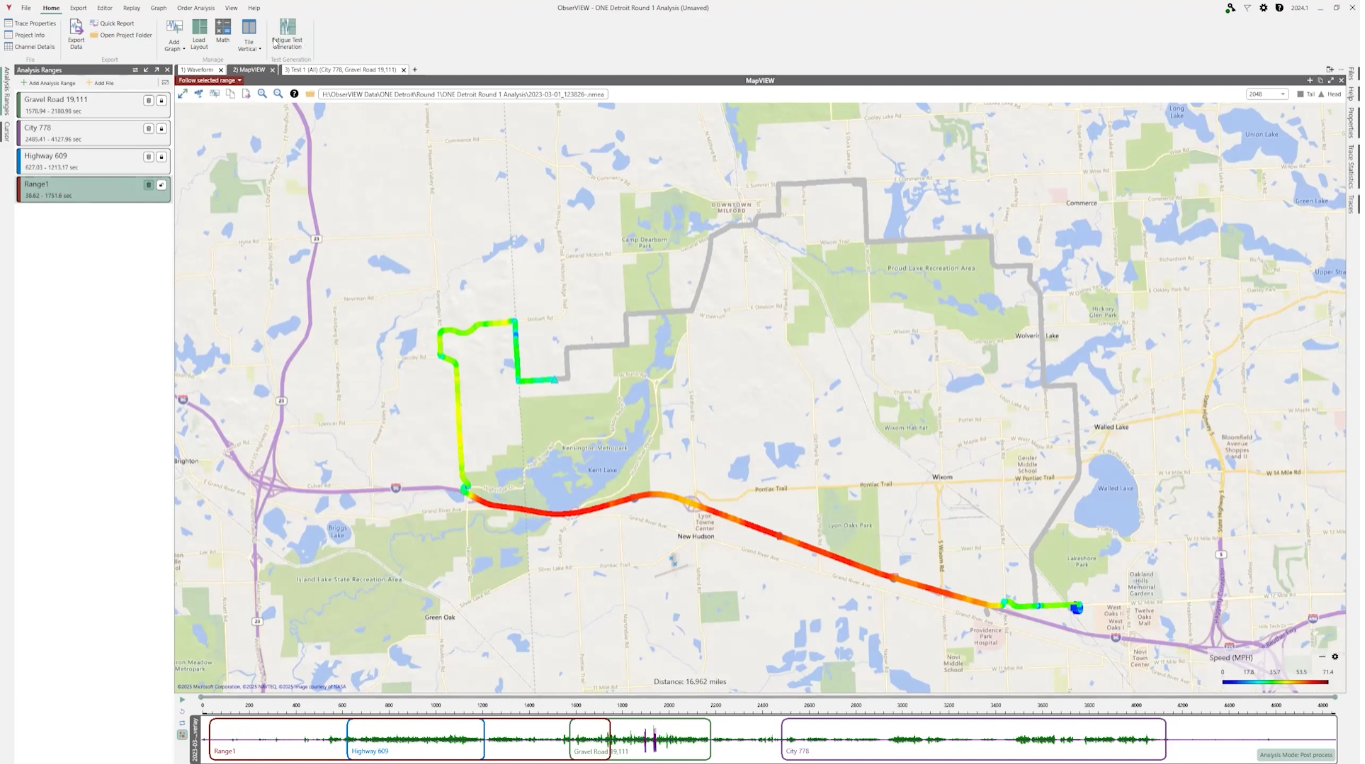Field-correlated Test Profiles from Recorded Data
Random Test Generation is a tool for creating accelerated vibration test control profiles that are the damage equivalent to a product’s lifetime use.
This tool processes multiple field-recorded data files with the fatigue damage spectrum (FDS), weighing the product’s different end-use environments based on their contribution to fatigue damage. It includes an extreme response and shock response spectra for evaluating test acceleration and peak levels.
ObserVIEW can export these test profiles to the VibrationVIEW control software, making it easy to navigate from analysis to shaker testing.
Easy UX for Test Generation
ObserVIEW’s Random Test Generation is a user-friendly experience for advanced processing.
Organizing Recorded Files
Engineers can upload multiple files to a project or segment indivdual waveforms into analysis ranges. Random Test Generation organizes the data ranges/files into “Vibration Groups” to represent the different vibration environments—e.g., highway, gravel, and city environments, x, y, and z axes, etc.

Evaluating the Test Acceleration Factor
Random Test Generation includes an extreme response spectrum (ERS) trace to validate the test acceleration factor. ObserVIEW can process one or multiple PSD files to create a composite ERS.
Example Uses
- Determine if an FDS-correlated test profile is over-accelerated
- Upload many recordings to analyze, combine the results, and determine if the test is over-accelerated
- Compare the ERS of a PSD to other ERS or SRS traces to calculate the SRS or maximax response spectrum (MRS)

GPS Data Ranges
Multimedia Sync syncs media files with time-waveform recordings. Engineers can segment a single file using GPS-correlated data to define analysis ranges for test development.

Kurtosis Control
Peak acceleration levels pose the highest risk for product damage. ObserVIEW’s fatigue damage settings include Kurtosion® Time Compression, which raises a vibration signal’s kurtosis above the Gaussian value of 3, increasing time spent at peak levels.
Kurtosion distributes damage across the fatigue spectrum rather than concentrating it at high frequencies. Engineers can adjust the kurtosis parameter to spend more time at potentially damaging levels and select the transition frequency for precise control.
The result is a test profile with faster, more representative damage compared to Gaussian tests.
Random PSD vs. FDS-correlated Test Profile
With the Random Test Generation software, engineers can create a random PSD test profile that is the damage equivalent to weighted time-history files from the product’s end-use environment. They can also compare multiple test failures, compare specifications to real-world data, and determine if current testing is valid (or over/under).
If you’re asking these questions, you need FDS Analysis
- What is the best random test to simulate my product’s environment?
- How long should I be running my random test?
- Can I accelerate my random test?



